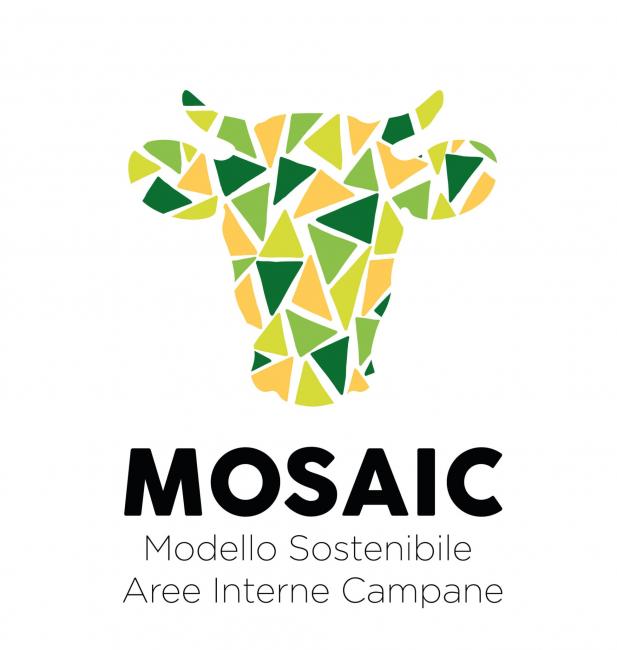Environmentally validation of sustainable models in livestock production in internal areas of Campania

Aim of the project is to create an innovative model for the meat production and processing. This will be done through the creation of an integrated supply chain system that will merge producers and processors of the internal areas of the Campania region. Changes in meat production techniques and innovative technological transfers will be carried out during all the phases of the supply chain, in order to improve meat nutritional and nutraceutical characteristics. The production of a product specification book will create a qualitatively superior product, also thanks to a traceability system
Work Package 1: From the results, as expected, fermentation differences emerged between the forage categories analyzed, strictly influenced by their chemical composition (structural carbohydrate content). In particular, the pasture samples present higher values of digestibility, gas production and volatile fatty acids; straws showed lower values, but not very different from hays, of digestibility and volatile fatty acids; on the contrary, gas production was higher in straw than in hay. These results also influenced the speed of fermentation, in fact pasture appears to be the most rapidly fermentable, while straw, richer in structural carbohydrates, shows a slower trend during the fermentation process. Work Package 2: the Charolaise and Limousine breeds are those that have proven to perform best in terms of growth and ingestion because they are the ones that, given the same nutrition and management, have recorded the highest values, followed by the Podolica and the Crossbreeds. Work Package 3 and 4: The preliminary results obtained show that the loin has an antioxidant power and a higher biomolecule content in the CHL1 sample. In the same sample it is particularly clear that the maturation process is associated with a progressive increase in antioxidant power with a significant peak after 60 days (p<0.01). The same result, although less effective, was found in the CHL2 sample (p<0.05). The cooking process of the sample appears to negatively influence the content of biomolecules and the antioxidant power of the food.
Fresh and preserved fodder of the Irpinia area will be characterized, in order to select the best ones to be administered to the calves. In vivo and ex vivo production performances of the animals and the quantitative and qualitative characteristics of the meat after maturation and transformation will be evaluated. Moreover, experimental protocols and procedures will be developed in order to validate the processes of breeding, production and processing of meat. Finally, through the use of innovative biotechnologies, the best performing breeds in the area will be propagated.
Irpinia represents one of the main internal areas of the Campania Region and suffers, like all those far from the coast, from a chronic lack of essential services that has limited its socio-economic development, with consequent marginalization and loss of identity, which has transformed localities and agricultural-pastoral communities in pseudo-industrial. The enhancement of local products, environmental characteristics and monumental areas in Irpinia can represent a driving force for development in an area that suffers from youth unemployment. In this context, the creation of a network contract and the drafting of a specification for the production of beef from cattle raised extensively or semi-extensively represents an advantage for the territory and a zootechnical and economic model which by creating employment is useful in reducing the land abandonment phenomenon and limit environmental degradation. In this context, the implementation of rural activities guarantees the safeguard of the environment and the quality of products such as the production of meat with low environmental impact and high nutritional value could represent a real economic opportunity for agriculture in Southern Italy.
The project has demonstrated how the use of innovative breeding models, through the use of local pastures, is perfectly transferable to all cattle companies operating in Campania, giving life to products (specifically meat) of very high nutraceutical value.
The preliminary analyzes carried out indicate that at time zero of maturation, the meat samples had the greatest antioxidant power and the highest content of biomolecules among the samples analyzed. At time 0 of maturation a high concentration of betaines and carnitines was also observed in the sample from INR2. The maturation process, as observed in the loin, also in the silverside is associated over time with an increase in antioxidant power with a peak after 60 days (p<0.05).
Work Package 1: From the results, as expected, fermentation differences emerged between the forage categories analyzed, strictly influenced by their chemical composition (structural carbohydrate content). In particular, the pasture samples present higher values of digestibility, gas production and volatile fatty acids; straws showed lower values, but not very different from hays, of digestibility and volatile fatty acids; on the contrary, gas production was higher in straw than in hay. These results also influenced the speed of fermentation, in fact pasture appears to be the most rapidly fermentable, while straw, richer in structural carbohydrates, shows a slower trend during the fermentation process. Work Package 2: the Charolaise and Limousine breeds are those that have proven to perform best in terms of growth and ingestion because they are the ones that, given the same nutrition and management, have recorded the highest values, followed by the Podolica and the Crossbreeds. Work Package 3 and 4: The preliminary results obtained show that the loin has an antioxidant power and a higher biomolecule content in the CHL1 sample. In the same sample it is particularly clear that the maturation process is associated with a progressive increase in antioxidant power with a significant peak after 60 days (p<0.01). The same result, although less effective, was found in the CHL2 sample (p<0.05). The cooking process of the sample appears to negatively influence the content of biomolecules and the antioxidant power of the food.
| Titolo/Descrizione | Url | Tipologia |
|---|---|---|
|
Sito web dedicato al progetto
|
Sito web
|
|
|
Pagina web Regione Campania dedicato al progetto MOSAIC
|
Link ad altri siti che ospitano informazioni del progetto
|